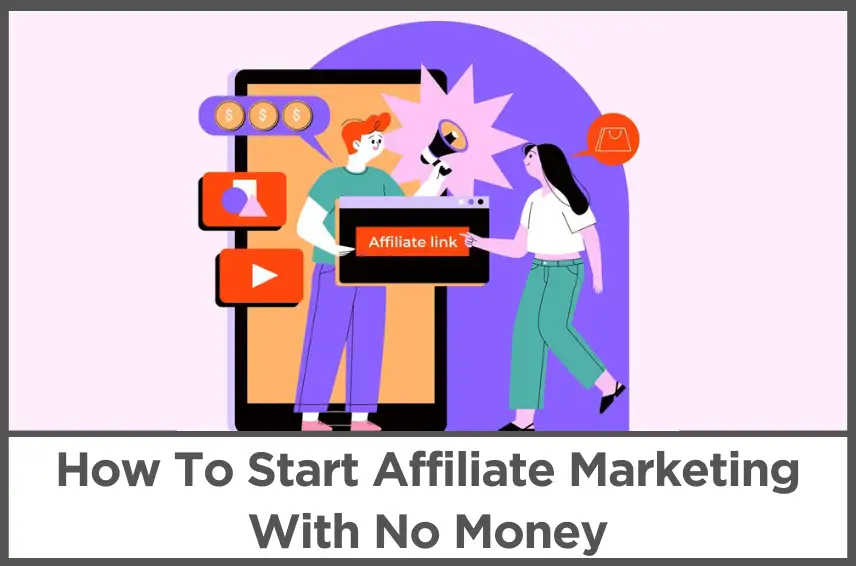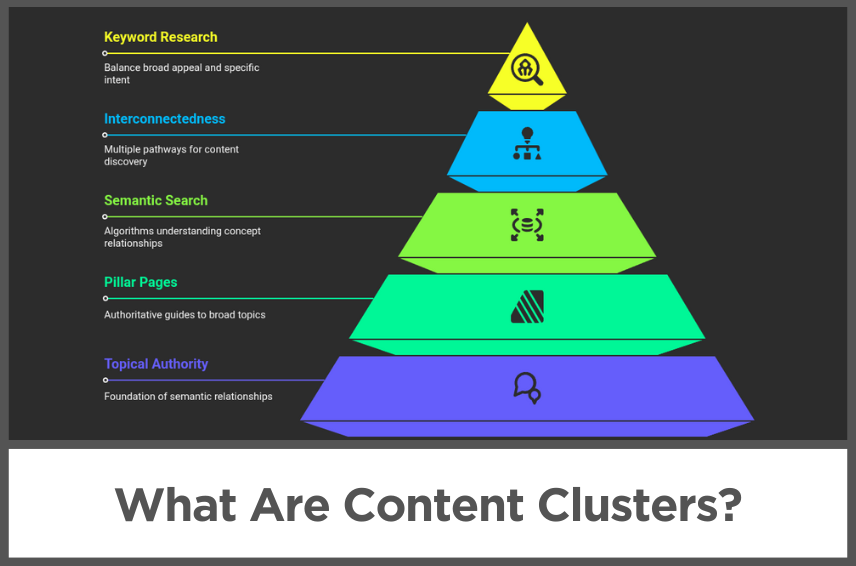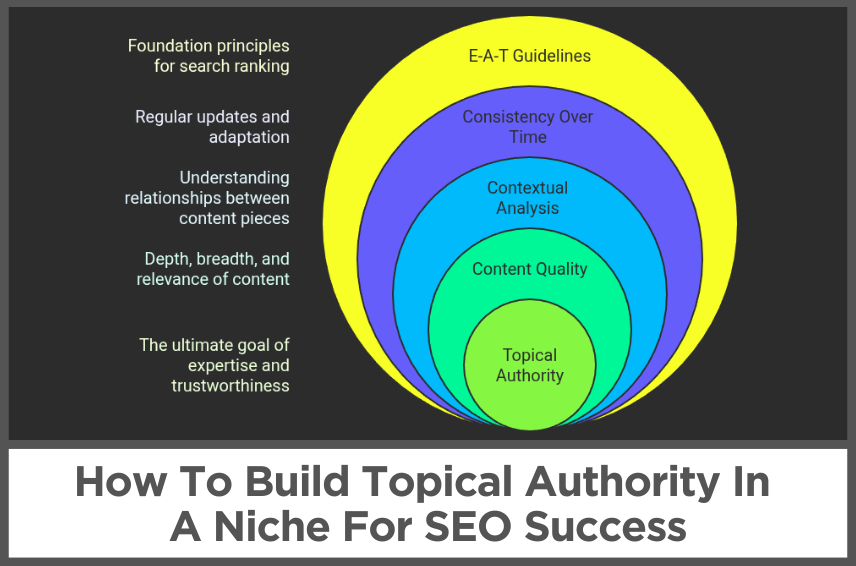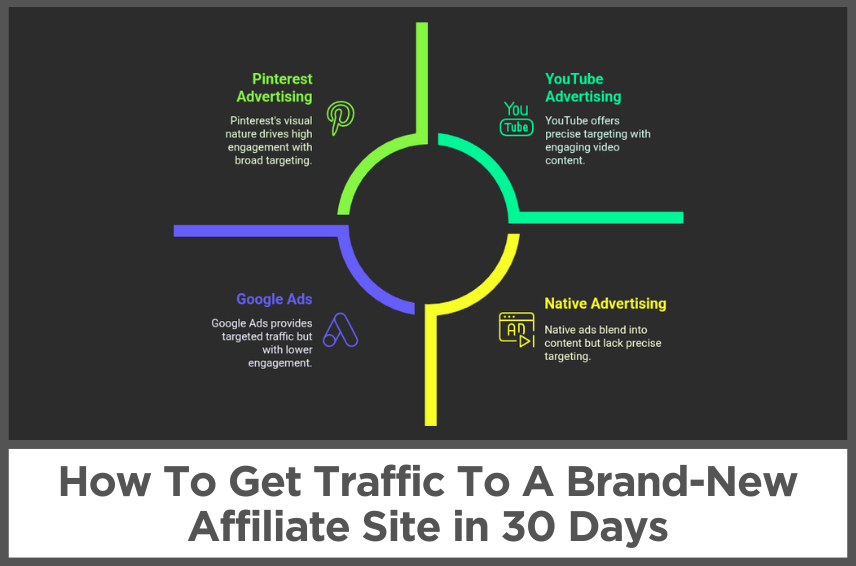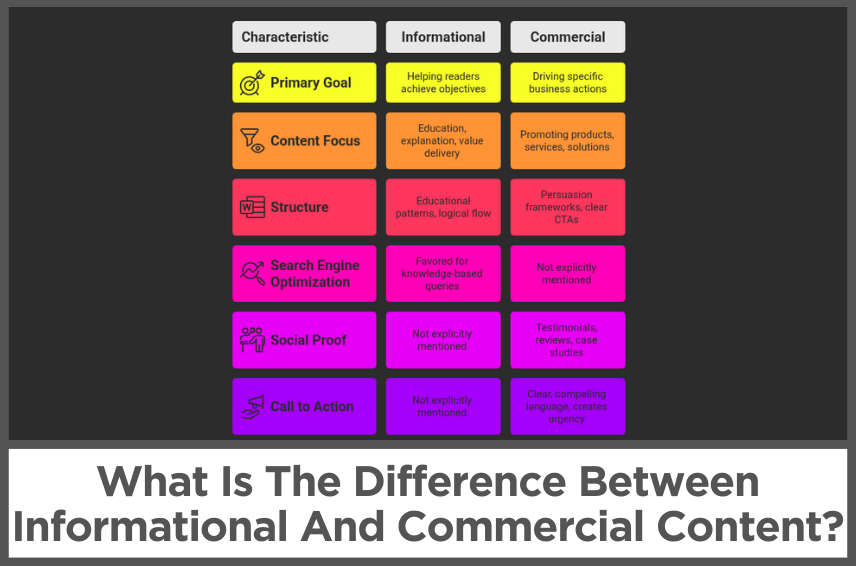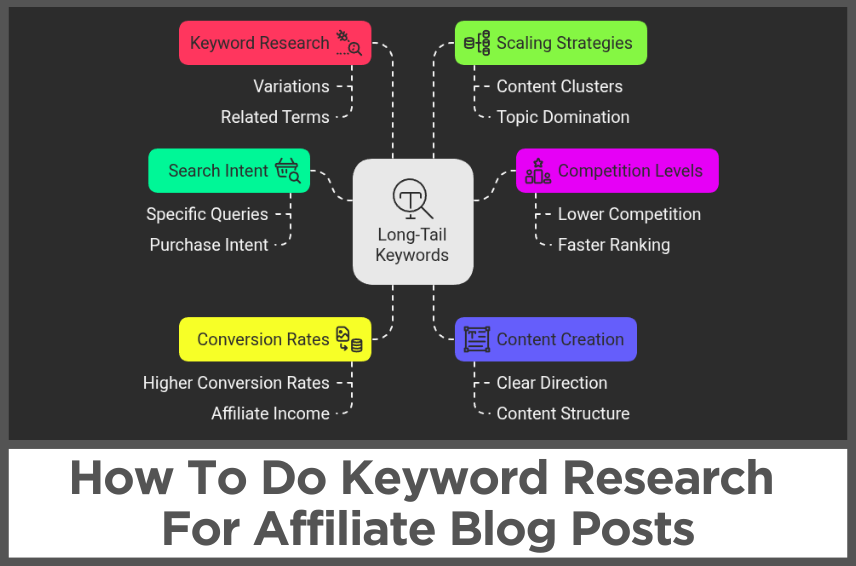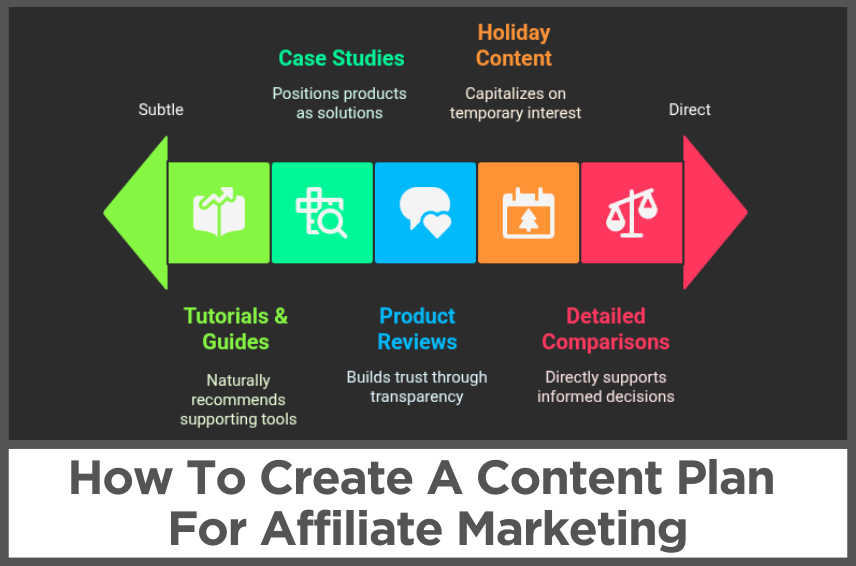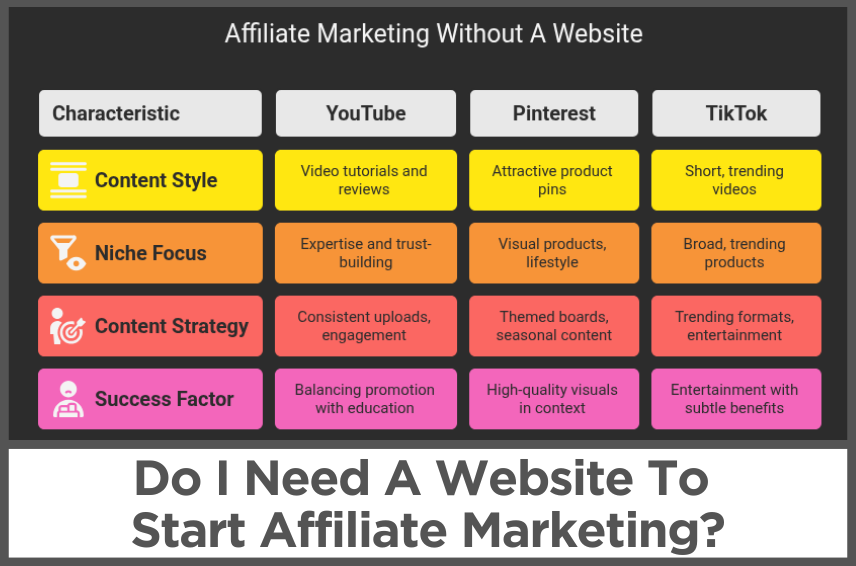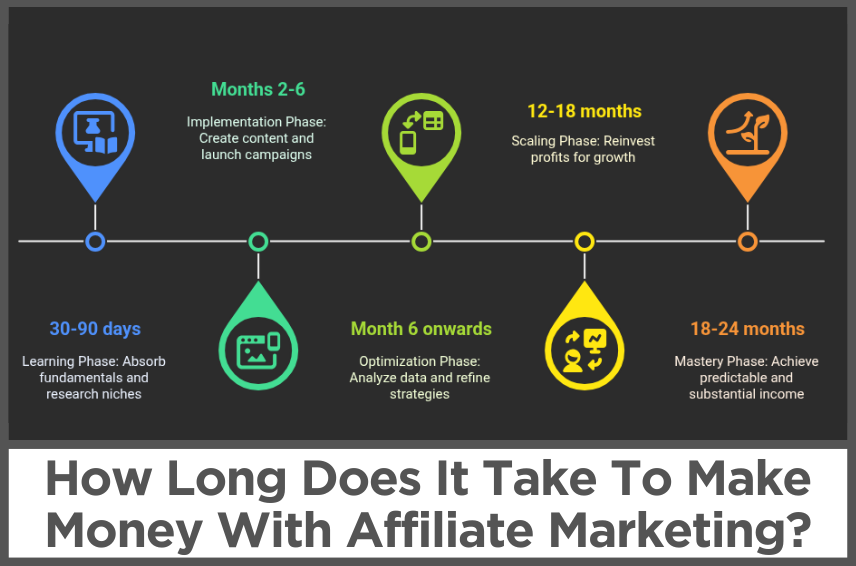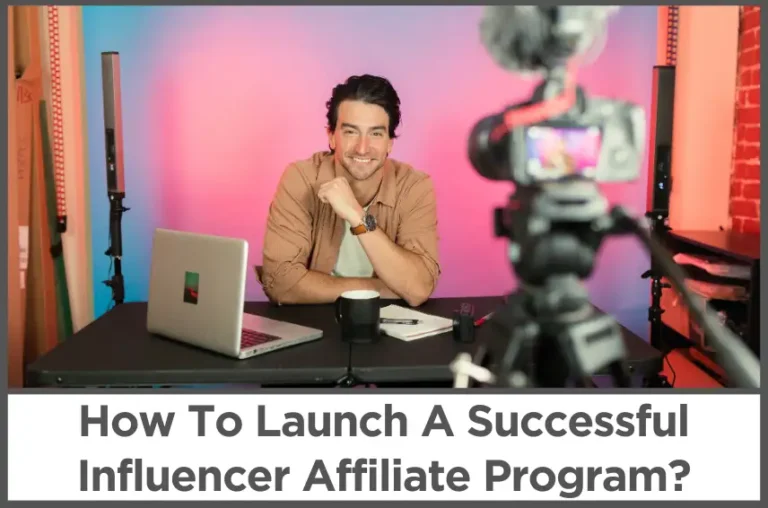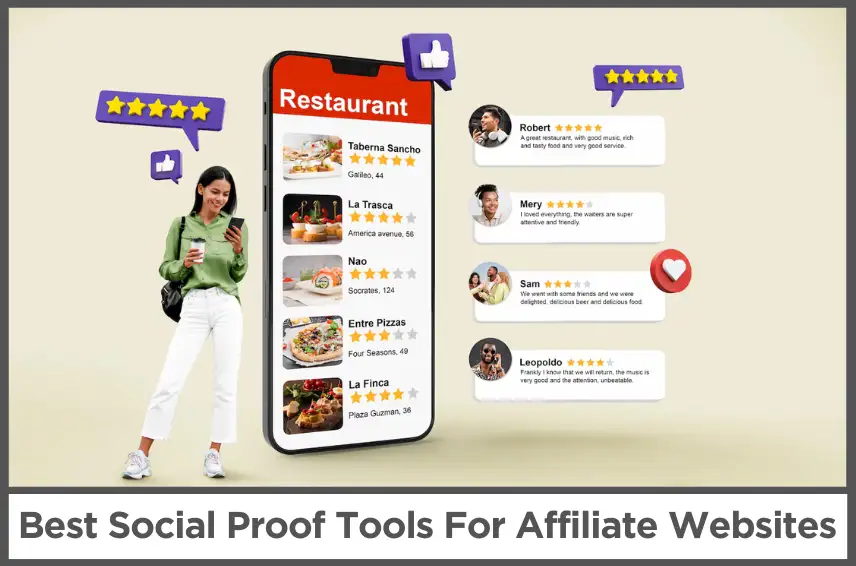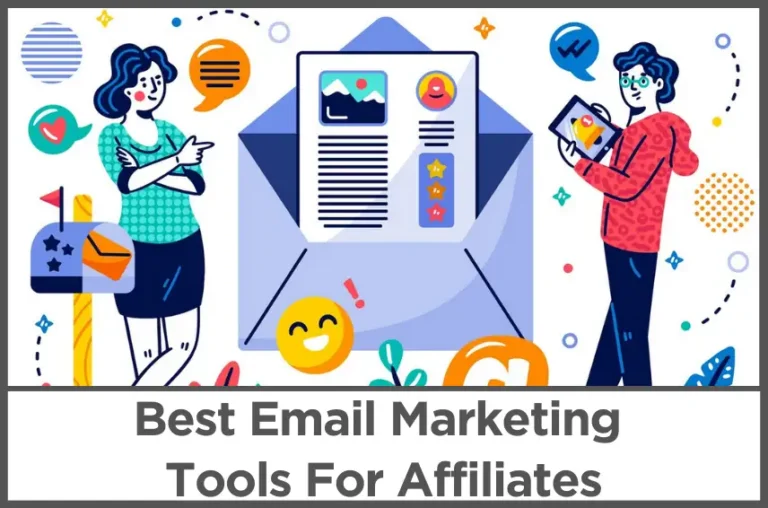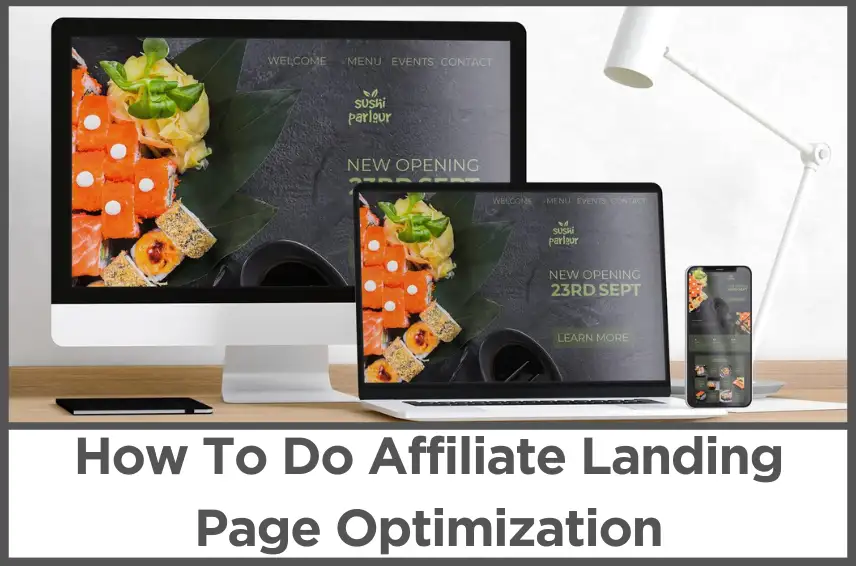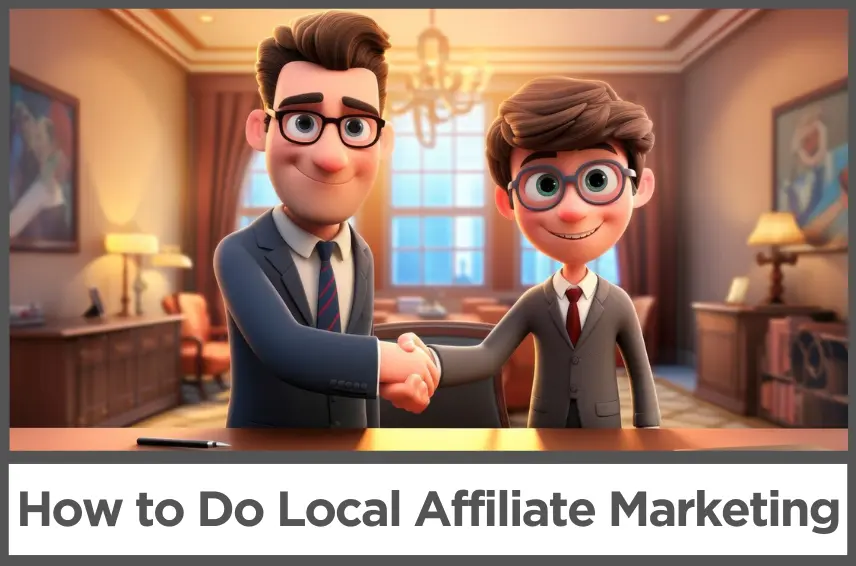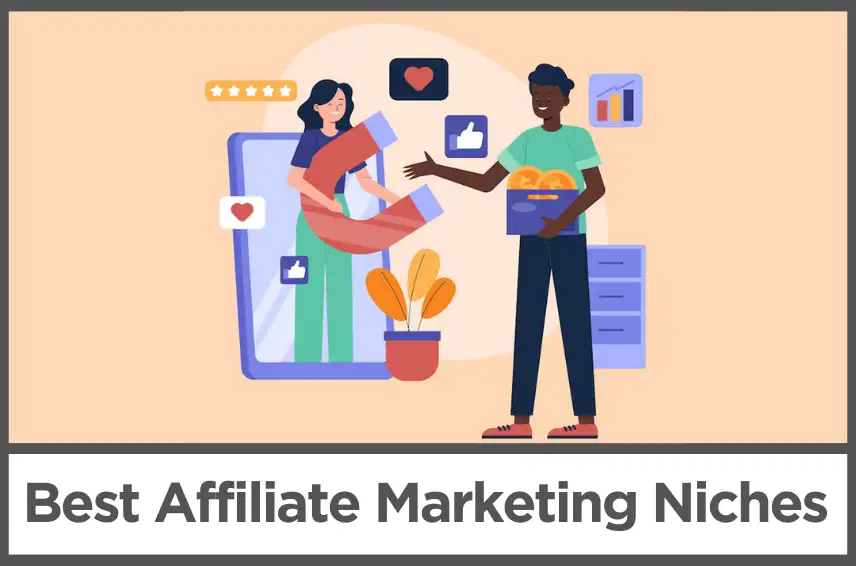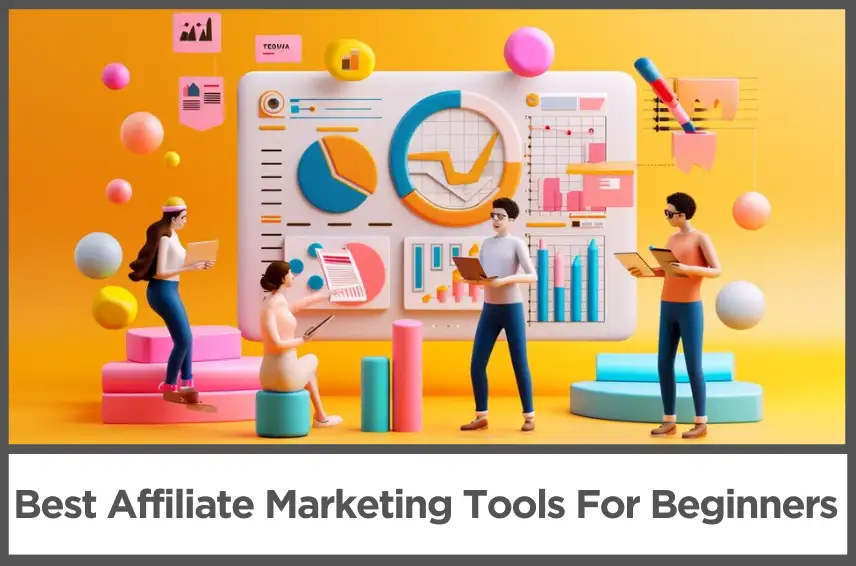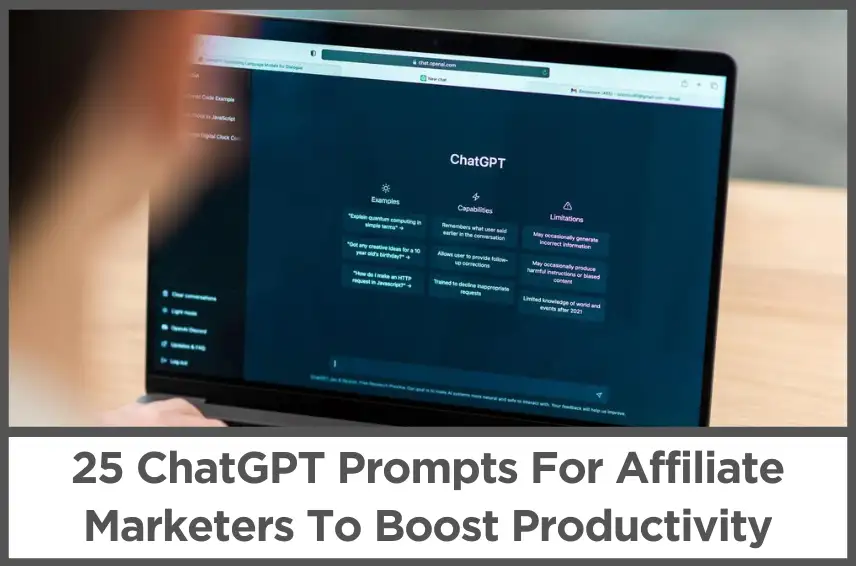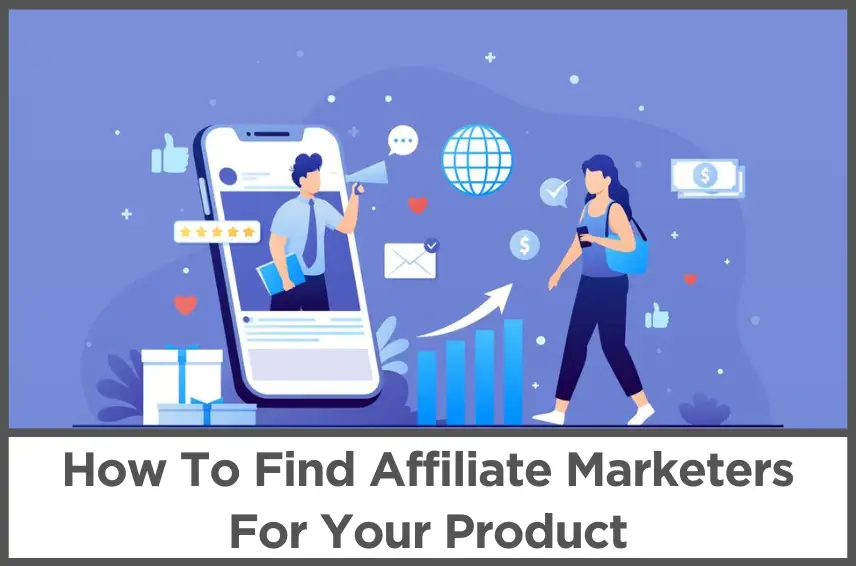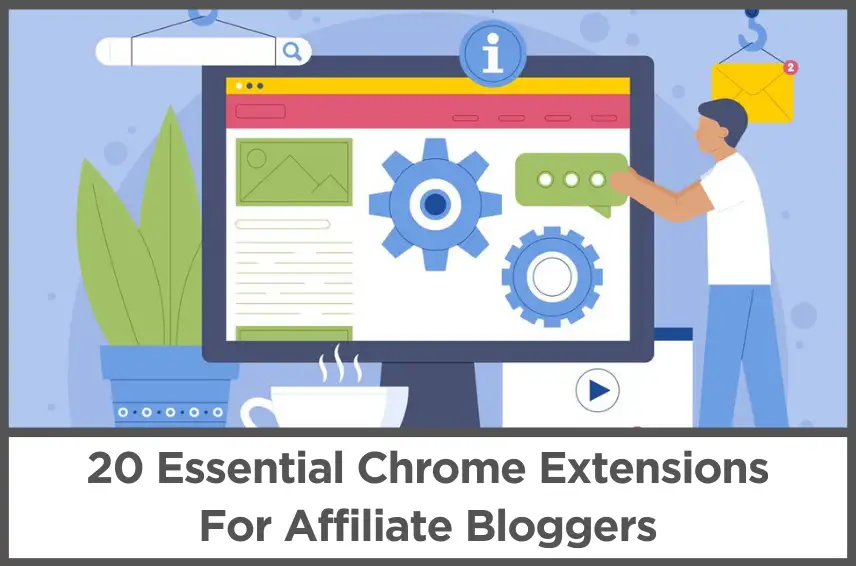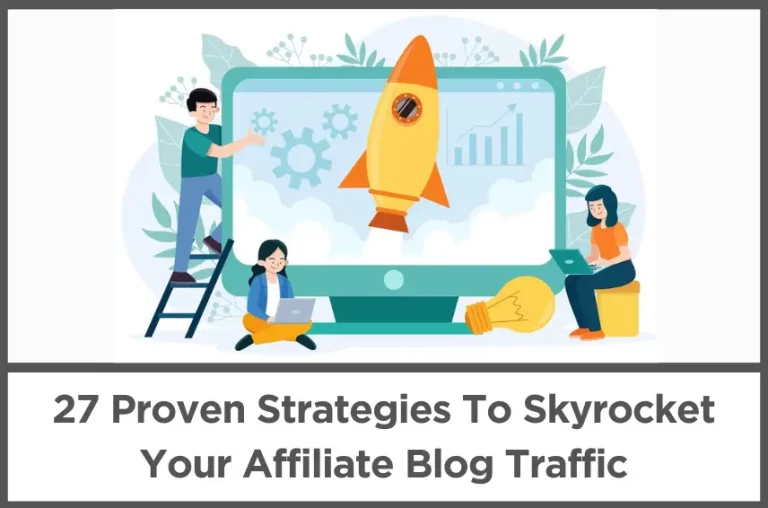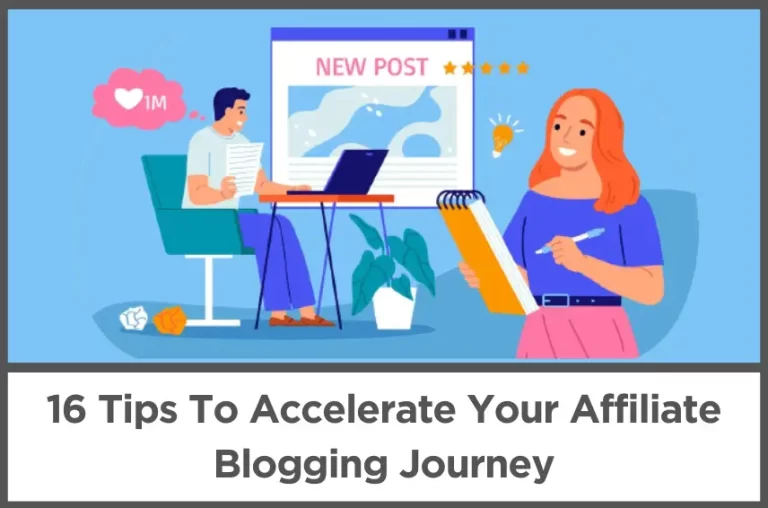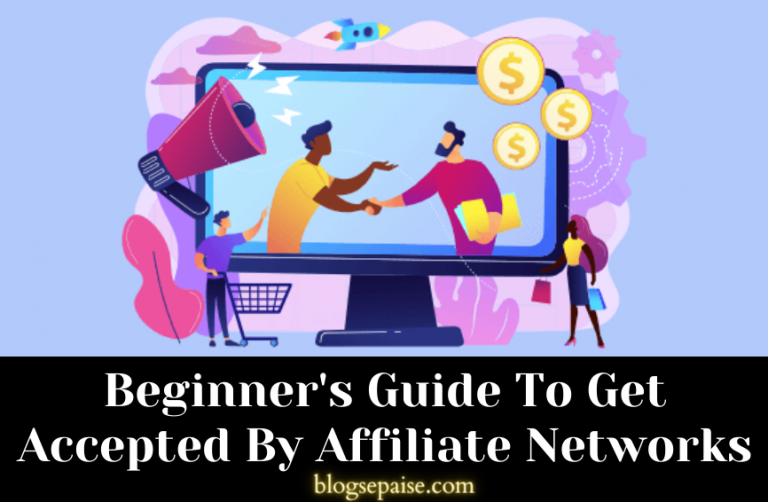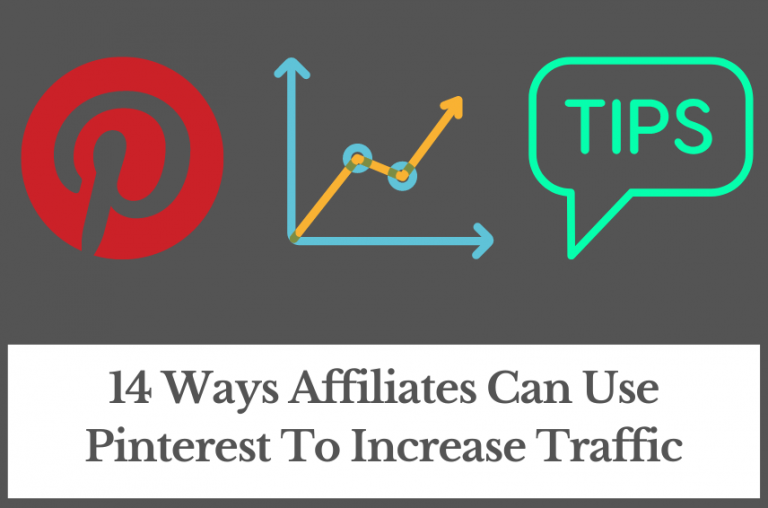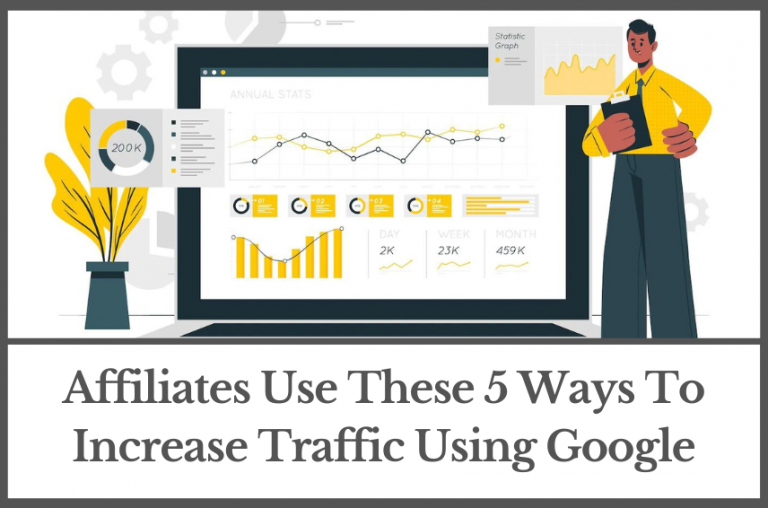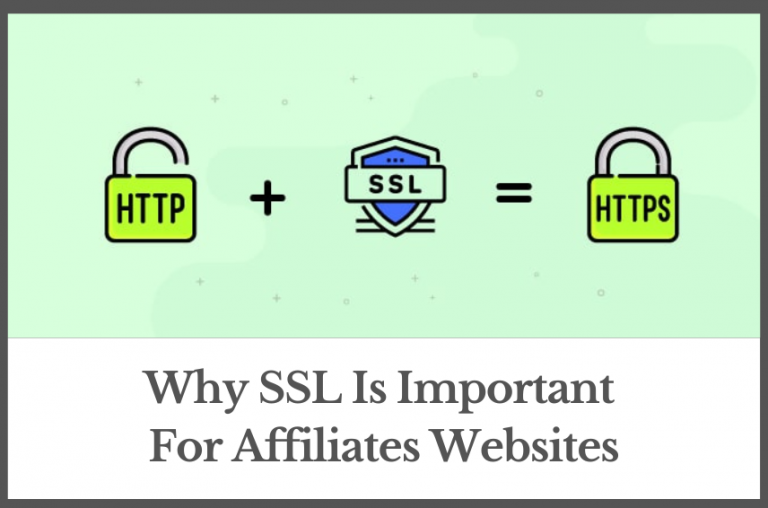How To Start Affiliate Marketing With No Money
by Abhigyan
You need only two things to start affiliate marketing with no money: an affiliate link to promote and a social media account to promote your link to your followers.
Now if you had a significant social media following, you already would have monetized that in some way, right?
So for the sake of this article, I’m assuming that you also don’t have significant social media followers or an email list to promote your affiliate links.
Then you would need another two things to be successful in affiliate marketing: patience and consistency.
If I had to start affiliate marketing from scratch today without investing any money, I’d create a Pinterest account and start posting 15-20 pins per day promoting my affiliate links and be patient for around 5-6 months to start seeing results.
That is the main gist of it. But I should tell you that this is not how you build a sustainable affiliate marketing business on the side.
You’ll soon get burned out and you might get frustrated after seeing only a few commissions being made after months of hard work.
Also, just randomly promoting an affiliate link on any social media won’t work if you have not done proper keyword research or targeted the correct demographic and user base for the product.
So I have created this guide that will help you not only to just start affiliate marketing with little or no money, but also to help you do it for a long time and make it sustainable.
Furthermore, you can follow this guide when you decide to promote products from a new niche or switch verticals in the future.
Disclosure: Some of the links I share might be affiliate links. If you click on one and make a purchase, I may earn a small commission as a thank you. But don’t worry, it won’t cost you anything extra. I only recommend stuff I genuinely believe in. Your support helps me keep creating awesome content. You can read my full affiliate disclosure in my disclaimer page.
IN THIS POST :
ToggleFinding The Right Niche
Finding the right niche is super important when you’re starting out in affiliate marketing.
It’s like finding your favorite flavor of ice cream – you want something that you really love and enjoy, because then promoting it feels less like work and more like fun!
So, let’s start by thinking about what you’re into. What do you love doing? What are you good at? Maybe you’re a gaming guru or a fitness fanatic.
Perhaps you’re a fashionista or a DIY enthusiast. Whatever it is, your niche should be something you’re passionate about.
For me, it was all about gaming. I’ve always been obsessed with video games, spending hours exploring virtual worlds and mastering different strategies.
So, when I decided to try affiliate marketing, it made sense for me to focus on gaming-related products and services. It was something I knew a lot about and enjoyed talking about.
Think about your hobbies, your skills, and your experiences. What topics can you talk about for hours without getting bored? That’s your starting point for finding the right niche.

Once you have some ideas for niches based on your interests and expertise, it’s time to do a little digging to see if they’re profitable.
After all, the goal is to make money from your affiliate marketing efforts, isn’t it?
Start by checking out what’s already out there. Use tools like Google Trends, Amazon’s bestseller lists, or even social media to see what’s popular right now.
Look for niches with a decent-sized audience but not too much competition. You want to find a sweet spot where there’s demand for what you’re promoting, but not so much competition that it’s hard to stand out.
For example, when I was researching gaming niches, I discovered that “retro gaming” was becoming increasingly popular.
People were nostalgic for old-school games and consoles, creating a growing market for retro gaming accessories and memorabilia.
It was a niche that had a passionate audience but wasn’t yet saturated with affiliate marketers.
Don’t be afraid to get specific with your niche research. Instead of just looking at broad categories like “fitness” or “cooking,” drill down into sub-niches like “keto dieting” or “vegan baking.”
The more specific you can get, the easier it’ll be to target your audience and tailor your content to their needs and interests.
Another tip is to pay attention to emerging trends and industry news.
What’s hot right now might not be so popular in a few months, so keep an eye on what’s happening in your niche and be ready to pivot if necessary.
Selecting Niche Relevant Affiliate Programs
Alright, so let’s talk about how to find those perfect affiliate programs. First off, you gotta do your homework.
Just like you wouldn’t buy a car without checking out different models and prices, you shouldn’t sign up for an affiliate program without doing some research.
Start by hitting up your favorite search engine and typing in keywords related to your niche. Look for companies that offer affiliate programs in your area of interest.
Check out their websites and see what products or services they’re offering. Take note of things like commission rates, cookie durations (how long your referral link stays active), and payment methods.
I remember when I was researching affiliate programs for my gaming niche. I spent hours scouring the internet for companies that sold gaming accessories, consoles, and even video games themselves.
I checked out their websites, read reviews from other affiliates, and compared commission rates to see which programs offered the best bang for my buck.
Don’t forget to look beyond the big-name brands too. Sometimes, smaller companies or niche-specific retailers offer better commission rates and less competition.
Plus, they might be more willing to work with beginner affiliates like yourself.
To make things easier, you should check out our collection of affiliate programs with high commissions across various niches.
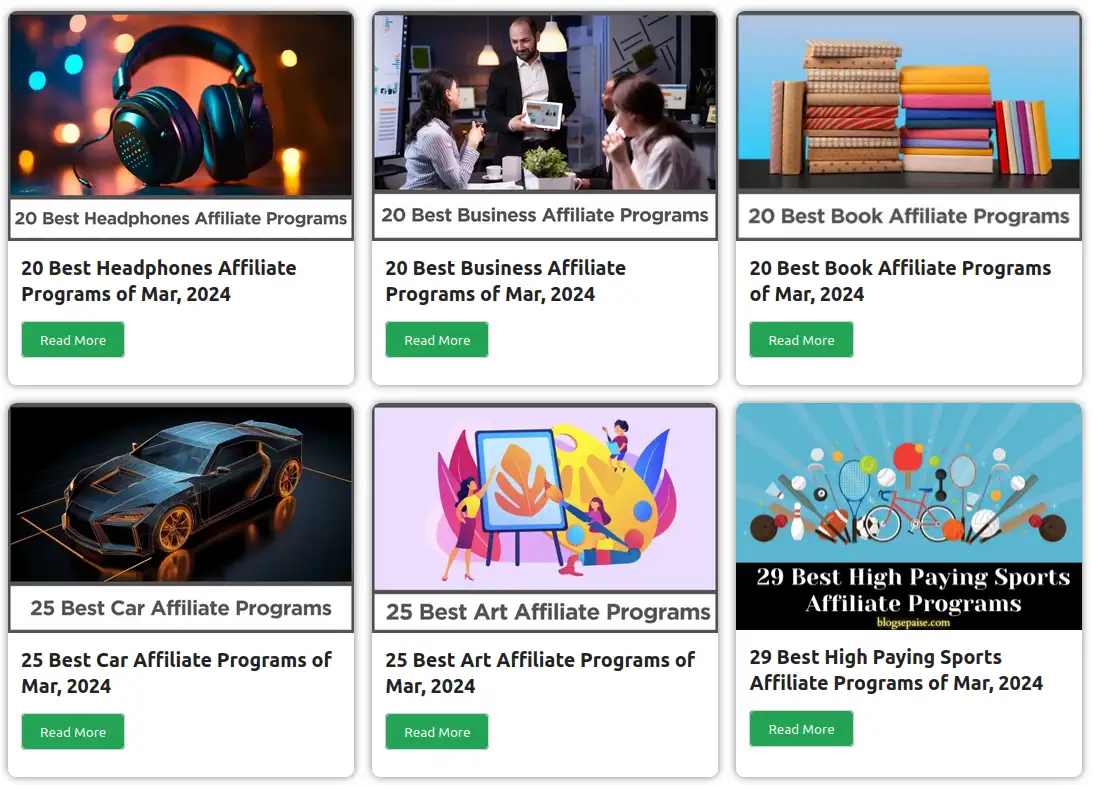
Once you’ve done your research and have a list of potential affiliate programs, it’s time to narrow it down to the ones that are most relevant to your niche.
Remember, you want to promote products or services that your audience will actually be interested in.
Think about your niche and what kind of products or services would appeal to your audience.
For example, if you’re in the fitness niche, you might want to promote workout gear, supplements, or online fitness programs.
If you’re in the cooking niche, you could promote kitchen gadgets, recipe books, or meal delivery services.
When I was selecting affiliate programs for my gaming niche, I focused on products and services that I knew my audience would be into.
That meant things like gaming chairs, headsets, and even subscription services for in-game loot boxes.
I wanted to promote products that I was genuinely excited about and that I knew my audience would love too.
Another thing to consider when selecting affiliate programs is the reputation of the company.
You want to partner with companies that have a good track record of treating their affiliates well and providing quality products or services.
Do some research online to see if there are any red flags or complaints about the company before signing up.
Ultimately, choosing the right affiliate programs is all about finding a balance between relevance, reputation, and revenue potential.
Take your time to do your research, trust your instincts, and don’t be afraid to experiment with different programs until you find the perfect fit.
Creating Content Consistently
Creating content consistently is crucial in affiliate marketing in order to increase traffic and followers.
There are mainly three ways you can achieve this:
Blogging
First up, we’ve got blogging. Now, I know what you’re thinking – isn’t blogging old school?
Well, yeah, maybe a little, but it’s still super effective for affiliate marketing.
Think of your blog as your own little corner of the internet where you can share your thoughts, ideas, and recommendations with your audience.
When it comes to blogging for affiliate marketing, the key is to provide value to your readers.
That means writing helpful, informative, and engaging content that solves their problems or answers their questions.
For example, if you’re in the fitness niche, you could write blog posts about workout routines, healthy recipes, or tips for staying motivated.
But here’s the thing – you don’t just want to write any old blog post. You want to write blog posts that naturally incorporate your affiliate links.
That means recommending products or services that you genuinely believe in and that are relevant to your audience.
So, if you’re writing a post about the best workout gear, you could include affiliate links to your favorite sneakers or fitness trackers.
And don’t forget to optimize your blog posts for search engines!
That means using relevant keywords in your titles, headings, and throughout your content to help people find your blog posts when they’re searching online.
Although you can start blogging for free using a platform like Medium, I’d advise that you should use a hosting provider like Verpex ($0.60/month) so that you can customize your blog according to your preferences and not be limited by Medium’s rules and regulations.

Social Media Marketing
Next up, we’ve got social media marketing. Now, this is where things get really fun!
Social media is like a giant playground for affiliate marketers, with endless opportunities to connect with your audience and promote your affiliate offers.
The key to success with social media marketing is to be authentic and engaging.
You want to build relationships with your followers and show them that you’re a real person, not just a sales machine.
Share behind-the-scenes glimpses of your life, funny memes, or inspiring quotes – anything that resonates with your audience and gets them talking.
But here’s the thing – you don’t want to be too salesy on social media. People don’t come to social media to be sold to; they come for entertainment and connection.
So, instead of bombarding your followers with affiliate links, focus on creating valuable content that adds value to their lives.
That could mean sharing helpful tips and advice, showcasing products in action, or hosting giveaways and contests.
The key is to find creative ways to weave your affiliate links into your social media content without being pushy or spammy.
And don’t forget to engage with your audience! Respond to comments, ask questions, and join conversations.
The more you interact with your followers, the more they’ll trust you and be willing to check out your affiliate recommendations.
Personally, I prefer Pinterest over other social media platforms. Pinterest works as a search engine so your pins stay relevant for a long period of time, compared to Facebook posts or Instagram reels.
Before you start, make sure to visit this guide and learn the various ways affiliates use Pinterest to drive traffic to their blog.
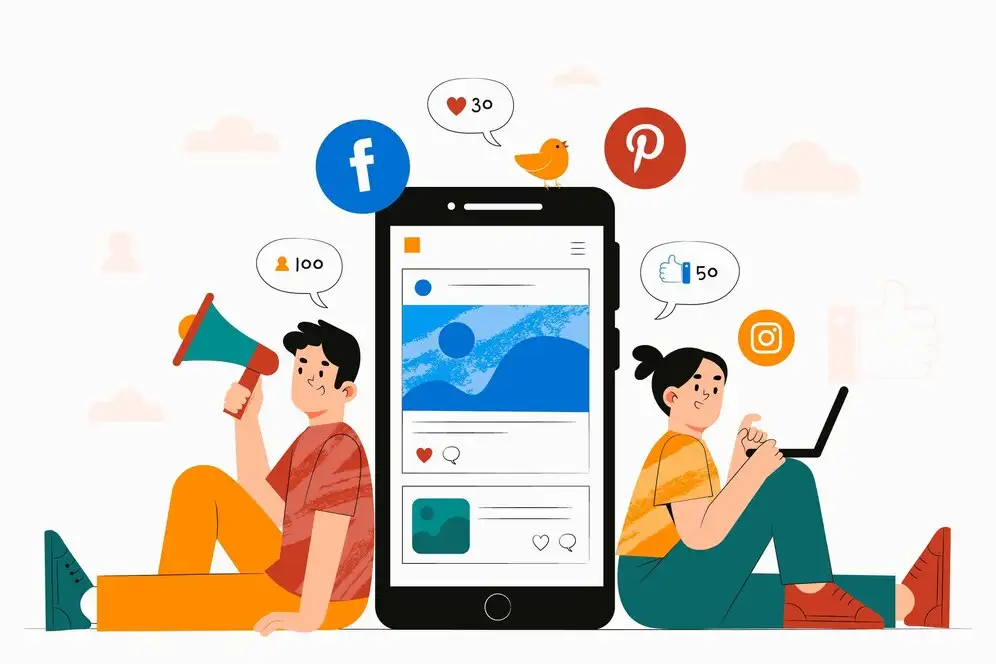
You can start with manual pinning but eventually, you’ll prefer to use a scheduler and automate your pinning strategy.
This will save you a lot of time which you can use for creating content.
You can check out this Tailwind Create tutorial which I use for my Pinterest account. And yes, it has a free plan for you to try things out!
The last thing you need is to create a lot of Pinterest pins. For this, you should try Canva. I use Canva to create all my Pinterest pins.
Why? Because not only it’s free, it also has a lot of templates and a intuitive drag-and-drop builder for creating and editing new designs.
If you don’t want to spend a lot of time creating your own Pinterest pins, you should definitely check out my Pinterest Canva Templates Bundle that will give you access to 68 designs that have worked for me.
You’ll just need a free Canva account to access and customize these templates for your brand which shouldn’t take more than a minute for you to create.
Video Marketing
Last but not least, we’ve got video marketing. Now, I’ll be honest – this one can be a little intimidating at first, but trust me, it’s worth it!
Video is one of the most engaging and effective forms of content out there, and it’s perfect for affiliate marketing.
With video marketing, you have the opportunity to showcase products in a way that’s visual, dynamic, and engaging.
You can create tutorials, product reviews, unboxing videos, or even vlogs documenting your affiliate marketing journey. The possibilities are endless!
But here’s the thing – you don’t need fancy equipment or professional editing skills to get started with video marketing.
All you need is a smartphone and a willingness to put yourself out there. People love authentic, raw content, so don’t worry about being perfect – just be yourself!
If you don’t like showing your face, you can try faceless video marketing using software like InVideo.
And don’t forget to optimize your videos for search engines by using relevant keywords in your titles, descriptions, and tags.
This will help people find your videos when they’re searching for related topics online.

Building An Audience
Building an audience is like making new friends – it takes time, effort, and genuine connection.
But trust me, it’s totally worth it! When you have a loyal audience who loves what you do, it makes everything in affiliate marketing so much more fun and rewarding.
The first step in building an audience is to engage with the people who are already there.
Think of it like striking up a conversation with someone you meet at a party – you want to be friendly, approachable, and genuinely interested in what they have to say.
For me, engaging with my audience meant being active on social media. I’d respond to comments on my posts, answer questions from followers, and join in on discussions in relevant groups and forums.
It was like having a conversation with friends – we’d share tips, swap stories, and geek out over our mutual interests.
But engaging with your audience isn’t just about talking – it’s also about listening. Pay attention to what your audience is saying, what they’re struggling with, and what they’re interested in.
Use that feedback to tailor your content and make it more relevant and valuable to them.
For example, when I noticed that my followers were asking a lot of questions about gaming gear, I started creating more content around that topic – like reviews, buying guides, and tutorials.
It was a win-win situation – my audience got the information they were looking for, and I got more engagement and loyalty in return.

Once you’ve started engaging with your audience and building those connections, it’s time to focus on growing your following. Think of it like throwing a party – the more people you invite, the more fun it’ll be!
One way to grow your following is to create high-quality, shareable content.
Whether it’s a blog post, a video, or a social media post, make sure it’s something that people will want to share with their friends and followers.
Think about what value you’re providing to your audience – whether it’s entertainment, education, or inspiration – and make sure it shines through in everything you create.
Another strategy for growing your following is to collaborate with other influencers or brands in your niche.
It’s like teaming up with a friend to throw a bigger, better party – you both bring something to the table, and you both benefit from the exposure to each other’s audiences.
For example, I once collaborated with a fellow gaming influencer on a joint livestream event. We played games together, answered questions from our followers, and even gave away some cool prizes.
It was a fun way to connect with our audiences and introduce them to each other, and it helped both of us grow our following in the process.
Lastly, don’t forget about the power of consistency. Just like with anything in life, building an audience takes time and effort.
Keep showing up, keep providing value, and keep engaging with your audience, even when it feels like you’re not making progress. Trust me, if you keep at it, you’ll see your following start to grow over time.
Driving Traffic
As you have realized by now, driving traffic to your blog without any money is a bit difficult. And there is no shortcut to it, at least in my experience.
As a beginner, I would advise you not to try more than two strategy at a time. This is what I would do that doesn’t cost any money and can still bring thousands of visitors to website within 5-6 months:
Targeting long-tail keywords with low keyword difficulty + Posting 10-15 Pinterest pins daily.
Now you don’t need to switch to expensive softwares like Ahrefs or Semrush to find these low competition keywords. You can use Moz keyword tools or KWFinder for free.
Although their free version won’t provide detailed reports like Ahrefs or Semrush, but they can get the job done with some practice.
Once you start seeing a growth in your traffic, you should invest in SEO, social media, and email marketing to scale your traffic.
Search Engine Optimization (SEO)
SEO is like the magic sauce that helps your website show up higher in search engine results.
Think about it – when was the last time you went to the second page of Google? Probably never, right?
That’s why it’s crucial to optimize your site for search engines so that people can find you easily.
Now, I’m no SEO guru, but I’ve picked up a few tricks along the way.
The key is to focus on keywords – those are the words and phrases that people type into search engines when they’re looking for something.
Do some research to find out what keywords are relevant to your niche, and then sprinkle them throughout your website – in your titles, headings, and content.
But here’s the thing – SEO isn’t just about keywords. It’s also about creating high-quality, valuable content that people want to read and share.
So, focus on writing blog posts, articles, and reviews that answer your audience’s questions and solve their problems.
The more useful and engaging your content is, the more likely it is to rank well in search engine results.
If you have a WordPress website, you should try using RankMath plugin. It’s free and will help you achieve perfect scores for on-page SEO. RankMath plugin is trusted by over 2 million users.

Social Media Promotion
Having multiple traffic streams is very important for any online business. You can’t just rely only on Pinterest in the long run.
You should increase your reach on Instagram, Twitter, Youtube, Tiktok, etc. You know, those addictive apps on your phone that you spend way too much time scrolling through?
Well, they’re not just for cat videos and memes – they’re also powerful tools for driving traffic to your website.
I love social media because it’s so easy to connect with people and share your content with the world.
Whether you’re posting photos on Instagram, tweeting funny anecdotes on Twitter, or sharing articles on Facebook, social media allows you to reach a wide audience and attract new visitors to your site.
But here’s the catch – you can’t just spam your followers with affiliate links and expect them to click. That’s a surefire way to get unfollowed faster than you can say “buy now!”.
Instead, focus on building relationships with your followers by sharing valuable content, engaging with their posts, and being genuinely helpful and supportive.
And don’t forget to use hashtags to increase the visibility of your posts. Hashtags are like little signposts that help people find your content on social media platforms.
So, do some research to find out which hashtags are popular in your niche, and then use them strategically in your posts to attract more attention.
Email Marketing
You may be thinking – isn’t email marketing dead? Far from it, actually! In fact, email marketing is still one of the most effective ways to reach your audience and drive traffic to your website.
Think about it – when someone subscribes to your email list, they’re giving you permission to contact them directly. That’s like having a VIP pass to their inbox!
So, don’t waste this opportunity – use email marketing to nurture your relationships with your subscribers and keep them engaged with your content.
Make sure that your readers can easily sign-up for your newsletter on your website. Experiment with the layout design or offer an incentive to collect your readers’ email address.
But keep in mind – nobody likes spam. So, make sure your emails are valuable, relevant, and interesting.
Send out regular newsletters with updates, tips, and special offers, and don’t be afraid to get personal and share a bit of your personality with your subscribers.
And don’t forget to include links to your website in your emails.
Whether you’re promoting a new blog post, a product review, or a special discount, make it easy for your subscribers to click through to your site and check it out for themselves.
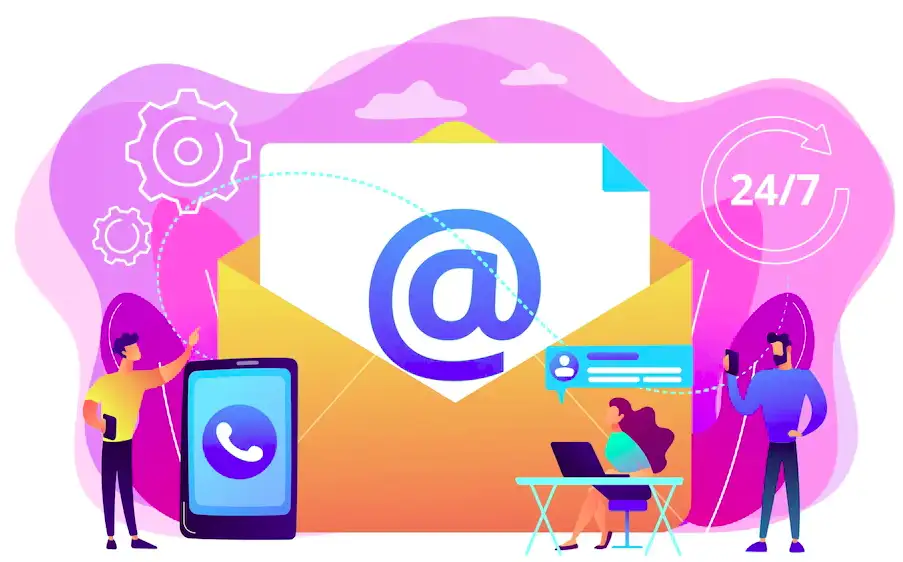
Creating Compelling Content
When I’m creating content for my affiliate marketing efforts, I always start by putting myself in my audience’s shoes.
What are they looking for? What problems are they trying to solve? Then, I tailor my content to address those needs and provide valuable solutions.
For example, if I’m promoting fitness products to an audience of health-conscious individuals, I might create content like workout guides, healthy recipes, or motivational posts.
By providing useful and engaging content, I’m not only building trust with my audience but also subtly promoting the products or services I’m affiliated with.
Visuals are also super important when it comes to creating compelling content.
Whether it’s eye-catching graphics, attention-grabbing videos, or stunning photography, incorporating visuals into your content can help make it more engaging and memorable.
Another tip is to keep your content clear, concise, and easy to digest. Nobody wants to read through a wall of text or sit through a long-winded video.
Break up your content into bite-sized chunks, use bullet points or numbered lists to organize information, and make sure your message is easy to understand.
Using Effective Calls-To-Action (CTAs)
Alright, you’ve created awesome content that your audience loves – now it’s time to seal the deal with a killer call-to-action (CTA).
Think of your CTA as the cherry on top of your content sundae – it’s what prompts your audience to take action and make a purchase.
When crafting your CTA, be clear and specific about what you want your audience to do.
Whether it’s clicking a link, making a purchase, signing up for a newsletter, or sharing your content with their friends, your CTA should leave no room for confusion.
For example, instead of a generic “Click here,” try something more action-oriented like “Get started now” or “Claim your discount today.”
By using language that prompts immediate action, you’re more likely to compel your audience to take the desired action.
Placement is also key when it comes to CTAs. Make sure your CTA is prominently displayed and easily accessible within your content.
Whether it’s at the end of a blog post, in the middle of a video, or as a pop-up on your website, your CTA should be impossible to miss.
Lastly, don’t be afraid to experiment with different CTAs to see what works best for your audience.
Try A/B testing different variations to see which ones generate the highest conversion rates. You might be surprised by what resonates with your audience!
Tracking & Analyzing Performance
Imagine your affiliate links are like little breadcrumbs leading to your pot of gold.
You want to make sure those breadcrumbs are leading in the right direction and bringing in the dough. That’s where monitoring comes in.
First things first, you need to know where your links are and how they’re performing.
Most affiliate programs provide dashboards or tracking tools that give you all the juicy details.
I check mine regularly to see which links are getting clicks, where those clicks are coming from, and whether they’re turning into sales.
But it’s not just about the numbers; it’s also about the quality of those clicks.
I pay attention to things like click-through rates (CTR) and conversion rates to gauge how effective my links are at getting people to take action.
If I notice a link isn’t performing as well as I’d like, I’ll tweak my approach or try something new to see if I can improve the results.

I use a combination of strategies to drive traffic, including search engine optimization (SEO), social media marketing, and email campaigns.
Each of these channels has its own unique quirks and nuances, so I keep a close eye on which ones are bringing in the most traffic and which ones are converting the best.
Conversion is where the magic happens. It’s when someone clicks on your affiliate link and actually takes the desired action, whether it’s making a purchase, signing up for a newsletter, or downloading a freebie.
Tracking conversions allows me to see which of my efforts are paying off and which ones need some tweaking.
One thing I’ve learned is that conversion tracking isn’t just about the final sale; it’s also about the journey leading up to it.
I pay attention to things like time on site, bounce rate, and the number of pages visited to get a better understanding of how people are interacting with my content.
This helps me identify any roadblocks or obstacles that might be preventing them from converting and make adjustments accordingly.
Scaling Your Business
One of the most important things I’ve learned about scaling my business is the importance of reinvesting my profits back into it.
It’s like planting seeds in a garden – the more you invest, the more you’ll eventually harvest.
When I first started making money with affiliate marketing, my instinct was to pocket every penny.
But then I realized that if I wanted my business to keep growing, I needed to put some of that money back into it.
So, I started reinvesting my profits into things like improving my website, upgrading my equipment, and investing in marketing campaigns.
I also took some online courses to expand my skills and knowledge, which has been super valuable in helping me stay ahead of the game.
One of the best investments I made was hiring a virtual assistant to help me with some of the day-to-day tasks of running my business.
It freed up so much of my time and allowed me to focus on the big picture stuff, like coming up with new content ideas and building relationships with potential partners.

Another key strategy for scaling my business has been diversifying my income streams.
It’s like having multiple streams of water flowing into your garden – if one stream dries up, you’ve still got others keeping your garden green.
At first, I was solely focused on promoting affiliate products and earning commissions.
But then I realized that I was putting all my eggs in one basket, so to speak. So, I started looking for other ways to monetize my website and audience.
One thing I did was to start creating and selling my own digital products, like eBooks and online courses.
It was a bit scary at first, but it’s turned out to be a great way to generate passive income and establish myself as an expert in my niche.
I also started looking into other affiliate programs outside of my main niche.
For example, I found some great programs for web hosting and domain registration, which complemented my gaming-related content nicely.
By diversifying the products and services I promote, I’m able to appeal to a wider audience and increase my earning potential.
Another income stream I’ve explored is sponsored content and partnerships.
Brands are always looking for influencers and content creators to promote their products, so I started reaching out to companies that I believed in and negotiating partnerships.
It’s been a great way to earn extra income while also providing value to my audience.
Overcoming Challenges
Dealing with rejection and staying motivated are two big challenges that all affiliate marketers face at some point. Trust me, I’ve been there too.
First things first, rejection is just a part of life, whether you’re in affiliate marketing or not.
Not everyone is going to say yes to your offers, and that’s okay. What’s important is how you handle rejection when it comes your way.
One thing that’s helped me deal with rejection is to not take it personally. Just because someone says no to your offer doesn’t mean there’s anything wrong with you or your business.
It could be that they’re not the right fit for what you’re offering, or they’re just not ready to buy right now.
Instead of dwelling on rejection, use it as an opportunity to learn and grow. Ask yourself why you got rejected and what you can do differently next time.
Maybe you need to improve your sales pitch or target a different audience. Whatever it is, take it as a learning experience and use it to improve your approach moving forward.
Another thing that’s helped me deal with rejection is to stay positive and resilient. It’s easy to get discouraged when you face rejection, but don’t let it knock you down.
Remember why you started in the first place and keep pushing forward towards your goals.
Surround yourself with supportive people who believe in you and your vision, and don’t be afraid to reach out for help when you need it.
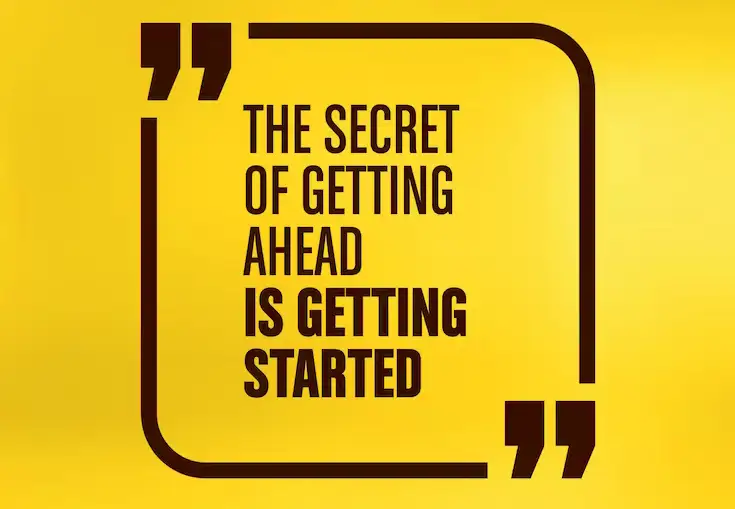
Staying motivated as an affiliate marketer can be tough, especially when you’re not seeing the results you want right away.
But let me tell you, persistence is key in this game. It took my blog around 8 months to reach the milestone of 5000 visits per month.
After that, the traffic growth was exponential. The first few months are generally tough for all new affiliate marketers.
One thing that’s helped me stay motivated is to set realistic goals for myself. Instead of aiming to make millions overnight, focus on smaller, achievable goals that you can work towards every day.
Celebrate your successes, no matter how small they may seem, and use them as fuel to keep pushing forward.
Another thing that’s helped me stay motivated is to stay connected with my why. Why did you start affiliate marketing in the first place?
Maybe you’re looking for financial freedom, or you want to be your own boss. Whatever it is, keep that why front and center in your mind, and let it drive you forward even when things get tough.
Finally, don’t be afraid to mix things up and try new things to stay motivated. Maybe that means trying out a new marketing strategy or exploring a different niche.
Keep things fresh and exciting to avoid burnout and keep your motivation levels high.
Final Thoughts On Affiliate Marketing With No Money
The key to success in affiliate marketing is to keep learning and adapting. The online world is constantly evolving, and what worked yesterday might not work tomorrow.
That’s why it’s crucial to stay up-to-date with the latest trends and strategies in the industry.
When I first started out, I didn’t know the first thing about SEO or social media marketing. But instead of throwing in the towel, I made a commitment to learn as much as I could.
I devoured blog posts, watched tutorials, and even invested in some online courses. And you know what? It made all the difference.
The truth is, the more you know, the better equipped you’ll be to succeed. So, never stop learning.
Whether it’s mastering a new marketing technique, studying your audience’s behavior, or staying informed about changes in the industry, there’s always something new to discover.
And don’t be afraid to adapt your strategies along the way. What works for one affiliate marketer might not work for another.
So, be willing to experiment, test different approaches, and see what resonates with your audience.
Remember, success in affiliate marketing isn’t about getting everything right the first time. It’s about being willing to try, fail, and try again until you find what works for you.
So, keep pushing yourself, keep learning, and keep adapting. With a little persistence and a lot of determination, you just might surprise yourself with how far you can go!
FAQ
1. Can I start affiliate marketing with no money?
Absolutely! Affiliate marketing is one of the few online businesses you can start with little to no investment. All you need is a computer, internet connection, and determination to succeed.
2. How long does it take to see results from affiliate marketing?
It varies for everyone, but typically it takes several months to start seeing significant results. Remember, building a sustainable affiliate marketing business is a marathon, not a sprint.
3. Do I need a website to start affiliate marketing?
While having a website can be helpful, it’s not necessary to start affiliate marketing. You can use social media platforms or email marketing to promote affiliate products and services.
4. Are there any risks associated with affiliate marketing?
Like any business venture, there are risks involved in affiliate marketing. These include changes in market trends, algorithm updates, or program closures. However, with careful planning and diversification, you can mitigate these risks.
5. Is affiliate marketing suitable for everyone?
Affiliate marketing is suitable for anyone who is willing to put in the time and effort to learn and implement effective marketing strategies. It’s a great option for individuals looking to start an online business with minimal upfront costs and flexible work hours.

If you find this article helpful, kindly share it with your friends. You may also Pin the above image on your Pinterest account. Thanks!
Abhigyan Mahanta
Hi! I’m Abhigyan, a remote web developer and an affiliate blogger. I create beginner-friendly guides to help new affiliates get started and grow in affiliate marketing. I also share information on remote companies and interview preparation tips.

